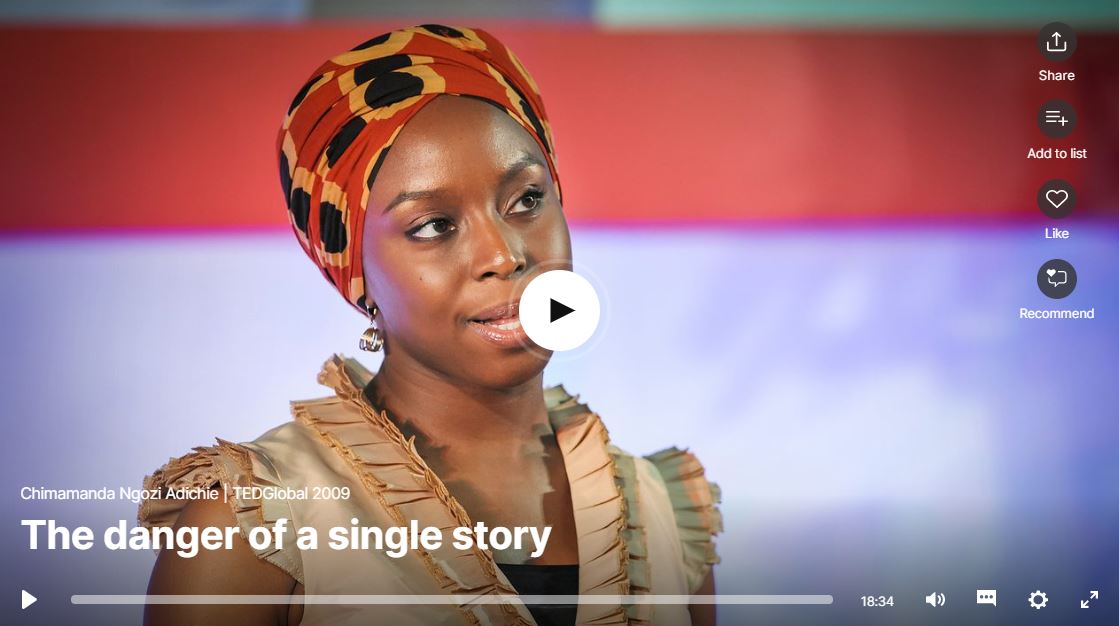Pay attention to the great and modern author Chimamanda Ngozi Adichie when she warns of “the danger of a single story.”
Adichie holds that the thieving nature of stereotypes owes not to their falsehood but their incompleteness.
Incomplete is insufficient—a single story can’t give a complete picture of any person or people.
All the more so amid a pandemic.
Adichie’s warning leads me to question whether the LA County Department of Public Health is providing a complete story about the effects of Covid-19 on various racial and ethnic groups. Consider this from the daily update posted on July 15 to the agency’s website:
“Data continues to expose disproportionality in health outcomes by race, ethnicity and income level data. African American/Black and Latino/Latinx people are twice as likely to die from COVID-19 when compared to White people. Communities with high levels of poverty are four times as likely to die of COVID-19 compared to residents with the highest income. The high rates of cases and deaths reflect a number of factors, including the effects of systemic racism and discrimination in the Country and a lack of access to the resources and opportunities needed for good health.”
The first sentence makes a vague claim about racial, ethnic and socioeconomic disparities in cases of Covid-19 infections and deaths. The next two sentences offer rough approximations, but only on rates of death. The final sentence reintroduces rates of infections alongside deaths, adding a claim of a causal relationship between Covid-19’s effects and systemic racism.
I question the whole paragraph—and I indicated as much to the LA County Department of Public Health in an email query on the same day it was published on the agency’s website.
I’ve been getting terse—and what I consider unhelpful—replies from the agency’s communications staff to various queries since.
I’ve noticed, meanwhile, that the declaration of a causal relationship between rates of infection and death from Covid-19 and systemic racism disappeared from the updates the day after my first query.
Let me be crystal clear at this point: There is good reason to discuss race and ethnicity as factors of public health in general and in regard to Covid-19 in particular.
Let me be just as clear that it’s important to seek the reasons and specifics behind the Los Angeles County Department of Public Health’s decision to claim that systemic racism is causing Blacks and Latinos to die at significantly greater rates than Whites.
All of this also begs the question of why the agency stopped publishing the claim.
Was the claim inserted as a one-off to satisfy vocal protesters who have rattled the cages of public servants? Was the agency pressured from within local government to include the oddly phrased finger-pointing on “systemic racism and discrimination in the Country” as a way to use national politics and policies as cover for the current conditions on the ground in LA?
These questions matter because we have a genuine opportunity to move forward on race relations right now—and we will miss our chance unless we are unflinchingly honest.
The LA Department of Public Health isn’t engaging such questions in any depth. That leaves us to wonder if the agency stopped pressing the claim of systemic racism because it is now a presumed staple of coverage by legacy, digital and social media throughout LA. Indeed, some legacy media outlets seem to have adopted the claim as their own.
Consider what the LA Times reported in the lead news story on the front page of its July 25 edition, using the following numbers to support its own claim of “inequities”—rather than disparities—in the effects of Covid-19:
“For every 100,000 Latino residents, 54 have died from COVID-19 in L.A. County; for every 100,000 Black residents, 46 have died. For every 100,000 Asian American residents, 29 have died; and for every 100,000 white residents, 23 have died.”
The report offered those numbers as facts, with no context or qualifier or attribution.
A reader applying simple extrapolation using the report’s implied mortality rates and U.S. Census Bureau numbers for LA County’s population would assume 2,635 Latino deaths; 416 Black deaths; 448 Asian deaths; and 603 White deaths.
Here’s some truth about actual Covid-19 death tolls, based on data from the Los Angeles County Department of Public Health as of July 24:
- The LA Times’ story implied a death rate that overstated the loss of Latino lives by 38%. A total of 1,906 Latinos in LA County have actually died of Covid-19—729 fewer than the publication reported.
- It understated Black deaths by 3%. A total of 429 Blacks in LA County have actually died of Covid-19—13 more than the publication reported.
- It understated Asian deaths by 26%. A total of 606 Asians in LA County have actually died of Covid-19—158 more than the publication reported.
- It understated White deaths by 41%. A total of 1,017 Whites in LA County have actually died of Covid-19—414 more than the publication reported.
I’ll note here that comparisons among ethnic and racial groups are imperfect because the LA County Department of Public Health presumably provides data on mortality rates based on its entire territory while its breakdown of actual deaths by race or ethnicity excludes Pasadena and Long Beach—cities that have their own public health agencies. That gap is not big enough, however, to significantly alter my analysis.
Journalistic instincts should in any case be on alert anytime statistics are part of a story, looking for such inconsistencies with an eye toward understanding and explaining them. My instincts went into overdrive when I saw this response to queries to LA County Department of Public Health about its claim of systemic racism, and the seeming inconsistencies in its data on mortality rates:
“We are looking at age-adjusted rates per 100,000 people in each population group in order to compare across groups.”
You can find the U.S. Centers for Disease Control and Prevention’s definition of “age-adjusted” health data here, by the way.
I understand that age-adjusted data can be valuable in helping public health officials gain insights on how a virus gets passed along and its likely paths of transmission, thereby helping them decide where resources might prove most effective.
It’s clear to see why researchers might adjust for age as they battle a virus with a death rate that runs high among individuals in their 40s in one group but notches a similar toll only among folks who are over 70 in another cohort.
Can we agree, however, that it is important to give clear and consistent comparisons on data in any case? And that an adjustment for age does not erase actual deaths of actual human beings?
The context of a per-capita breakdown of the actual totals, meanwhile, can give a very different picture from the LA County Department of Public Health’s oft-repeated claim of racial and ethnic disparities.
Here is a listing of several racial or ethnic groups’ respective shares of Covid-19 deaths based on the most recent data from the county health agency as of this writing, followed by corresponding shares of the overall local population, according to the most recent data from the Census Bureau:
- Latinos: 47.3%/48.6%
- Blacks: 10.7%/9.0%
- Asians: 14.9%/15.4%
- Whites: 25.1%/26.1%
Both sets of data are, again, less than perfect, but the general trend is obvious. Covid-19’s death rate is about even among ethnic and racial groups in terms of their respective shares of the population.
The notable exception is Blacks. The difference of nearly two percentage points might seem small at first glance, but it should be viewed on an index basis, indicating that group’s share of Covid-19 deaths exceeds its share of the population by nearly 19%.
There’s no shortage of room to note the larger disparity for Blacks and still question the health department’s claims of broader racial disparities.
And there’s good reason to ask why legacy, digital and social media have simply run with the premise of systemic racism without looking deeper into the agency’s numbers and methodologies to provide some vetting and context.
Is this a case of fake news?
That term is entirely too lazy—the handiwork of President Donald Trump’s own slapdash work ethic and slovenly intellect.
I’ve spoken to a number of local journalists of the legacy media about the matter, and it’s my sincere estimation that the trouble here is instead a lack of journalistic instincts combined with an absence of the grit that is required to overcome the danger of a single story in the face of strident advocates of a singular viewpoint.
This is especially puzzling given the wonders of our digital age, with its enormous capacity to help us gather, analyze, chart, report and store data.
That leaves no good reason that public health officials couldn’t present both the actual numbers and the age-adjusted data on Covid-19 infections and death tolls with an explanation of why both perspectives matter.
There’s no reason other media outlets couldn’t do the same—this column provides a template.
That doesn’t make it easy to address the subject, though.
A hard truth of the pandemic is that the death of a White person who had 80 years of wear and tear on his or her body doesn’t—and shouldn’t, from the perspective of public health—raise the same alarm as a 40-something Latino person getting cut down by Covid-19.
The greater truth is that both should count because giving everyone a better understanding of all the numbers behind the pandemic might pay off in ways nobody can imagine.
The complete truth will require an ability for all of us to get beyond the other pandemic of the day—our society’s obsession with single stories.
Sullivan Says
You can go here for a TED Talk titled “The Danger of a Single Story,” given in 2009 by Adichie, author of Americanah and other works.








51 per 100,000? Whatever happened to Dr. Fauci’s claim of up to 3.4 per 100 (x1000 = 3400 per 100,000), which is the rate which launched the lockdowns by mayors and governors across the US? No adjustment of age, ethnicity etc. can ‘splain this, Lucy!
sorry about lack of documentation, doesn’t seem to be on youtube (I wrote down “3.4 per 100” and “34 times the 0.1 per 100 from CDC website’sf avg death rate of the seasonal flu” in March which I believe I heard as POTUS stood in background).
I would suggest you check all data to see if the numbers are “age-adjusted.” There are some good reasons to use age-adjusted data, as the column notes, but that’s not the only perspective available, and I think the method should be be explained whenever cited, in any case.